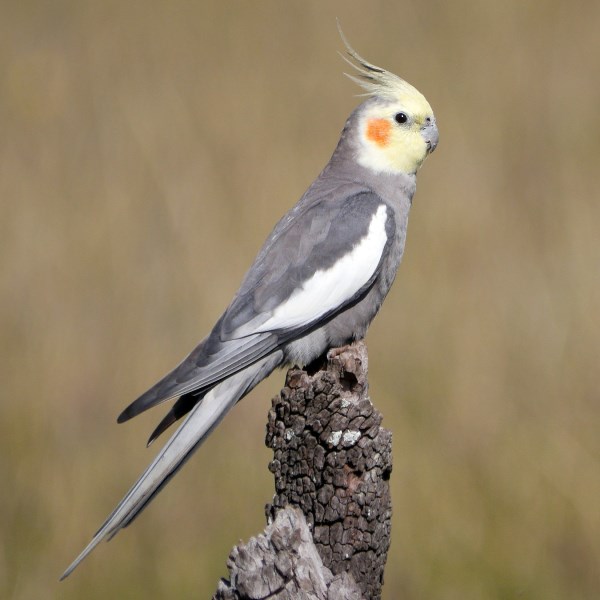
- by FPABS-Admin
- 0
- Posted on
Cockatiels – Care & Feeding
Cockatiels – Care & Feeding cockatiel needs a cage spacious enough to accommodate multiple perches, toys, food bowls and have plenty of room to flap its wings without hitting them against anything. A cage with a large door front is ideal because it makes it easier to return a cockatiel to its cage, especially since cockatiels can be flighty birds. Cockatiels are natural ground foragers and will forage on the bottom of the cage if given the opportunity; cover the cage floor with newspaper and sprinkle crumbled treats or millet sprinkle seed for your cockatiel to find. Cockatiels are social birds and thrive when given opportunities to interact with you, whether it is gently petting their cheek feathers, being talked to or simply being in the same room as you.
SOCIAL BEHAVIOUR AND CARE
The cockatiel is fairly easy bird to keep as a pet and relatively quiet. It’s a gentle and affectionate bird that needs attention. In this regard, it’s important that you stick to a regular schedule with regard to its care, so that the cockatiel knows when it can or cannot get attention. It is best to keep cockatiels in pairs.
Take the bird out of its cage for one or more hours every day. Stroking or cuddling is not a good idea. The cockatiel mainly just wants to be with you. So talk to it regularly or occasionally tickle it. Train the bird, too, by teaching it to step on your hand, for example. Or give it a toy with food in it.
Cockatiels are not as loud as other parrots. The males can be taught to whistle songs or imitate sounds, like a doorbell. Learning words, however, is more difficult.
FOOD
In captivity, it is best to serve the cockatiel pellets.
Either monocolour or multicolour maintenance food for large cockatiels as its daily meals, or breeding food during the breeding and moulting periods. The pellets contain all the essential nutrients in the right proportions, so that your bird does not eat selectively and gets everything it needs. Supplement with fruit, vegetables and/or herbs. Hard-boiled eggs, raisins and other dried fruits are also good.
HOUSING
You can keep a cockatiel in a cage or an aviary as long as it has plenty of room to move around. For two birds, the best aviary is at least 2.5 x 1 x 2 m in size, with a draught-free and frost-free interior. You should also provide perches.
Indoors, the cage must be at least 120 x 60 x 70 cm for two cockatiels. Do not get a round cage or a high and narrow one. A wide one offers more room to move. It’s best if the bars are horizontal, so that the cockatiel can climb, and they are close enough together.
Every day, you must remove any faeces, check that the toys are still safe, remove any food that has been left behind, and clean the bath, food and water bowls. You should also change the bedding in the cage once a week (or every month to three months in an aviary), and clean the floor, perches and toys every week.
The optimal covering for the cage floor is wood chippings. In an aviary, brown shell sand can be used as ground cover.
BREEDING
You can let outdoor birds breed in the aviary at the end of March or beginning of April, and indoor birds breed all year round, but ideally once or twice a year. The female must be at least one year old, the male nine to twelve months.
Provide a horizontal breeding block. The hen will lay an egg every day, after which both the male and female will brood. After around three weeks, the first eggs will hatch. After six to seven weeks, the youngsters are independent.
